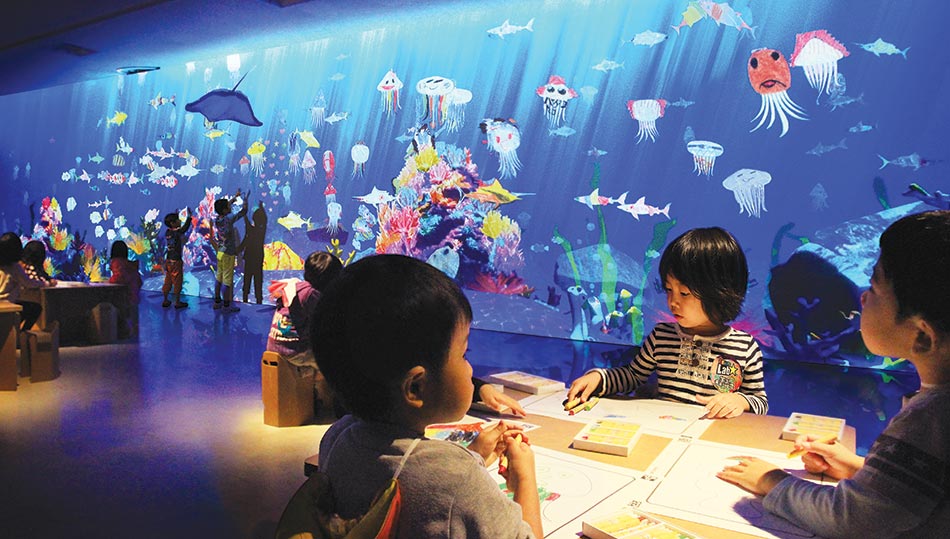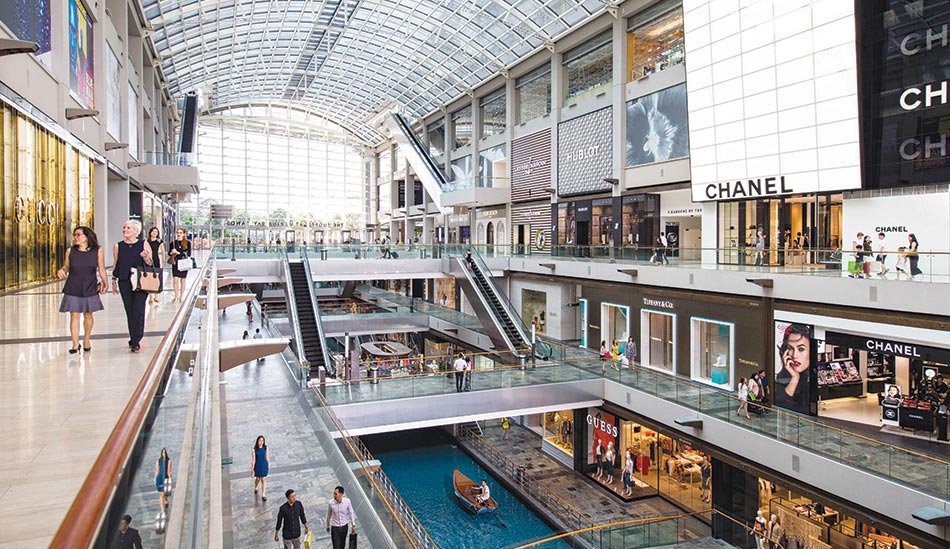
Today, we see the rise of shared community spaces such as co-working and co-living. 'Community' is the new dimension that is gaining ground in retail today.
Moving from a transactional space, Shopping centers in the future will transform into social hubs. They will not only be a place to shop, but will be an urban oasis to eat, work, play and socialize
The 'social' dimension of our society will redefine how we shop, eat, work and play. And along with this, spaces such as offices, hotels, stores and shopping centers will make the shift. In some markets, we are already seeing the revival of bygone farmer markets and local produce under one roof. A good example here would be the chain of Eataly outlets, where it's all about 'Eating Italian' , that celebrates Italian biodiversity, and creates an informal, natural, and simple place to eat, shop, and learn.
 Marina Bay Sands
Marina Bay SandsWith a generation defined as 'On The Move', we could certainly imagine shopping centers of tomorrow as a culmination of mobility hubs, stations, baggage check-ins and co-working and co-living places. And while we are encapsulated by the digital net, the design of shopping centers will thrive by bringing back nature and culture, art and theatre, ample natural light, flora & fauna, landscaped spaces, natural materials, intelligent building systems, etc.
While architectural planning and building forms will be designed as community driven phenomena, building materials too will respond in a similar manner. Monolith environment-friendly materials and finishes, smart and intelligent glass fenestration, smart lighting, mood enhancing landscape and other similar building elements will come together.
Tomorrow's shopping centers will also impact design of stores they house, which will then manifest various aspects of Retail Experience for customers. Physical stores within these malls will ensure customers not only explore stores for shopping but also for 'immersion' and 'excursion'. Digitally driven times ahead will make customers more flirtatious with brands and thus it will be imperative for stores to convert the 'flirtatiousness' into 'meaningful' relationships.
 Marina Bay Sands
Marina Bay SandsFacades of stores will be welcoming and inviting. Interiors will be gallery-like, signage will double up as interactive billboards, and will have fixtures like restructured furniture, and so on. Store assistants will be more like 'experts' and 'hosts or hostesses' that one sees in flights. Physical boundaries between stores may diminish to an extent that malls will present a more seamless retail to customers. Shops will be converging places of buying and customizing and hence one could imagine malls providing a 'Third Place' for shoppers in terms of customizing, 3D printing, tailoring, fabricating and co-creating activities.
Some great examples of emerging consumer experience centers that are social and community driven include Singapore's Clark Quay and Cyber Hub of Gurgaon. One of the most noteworthy is the Marina Bay Sands, an iconic Singapore landmark that includes a hotel, casino, museum, shopping mall, and incredible views of the city and the bay. Today, it is not just a space but reflects the social life of Singaporeans. So, Shopping Centers will not be just a place to buy stuff, but to do stuff!















